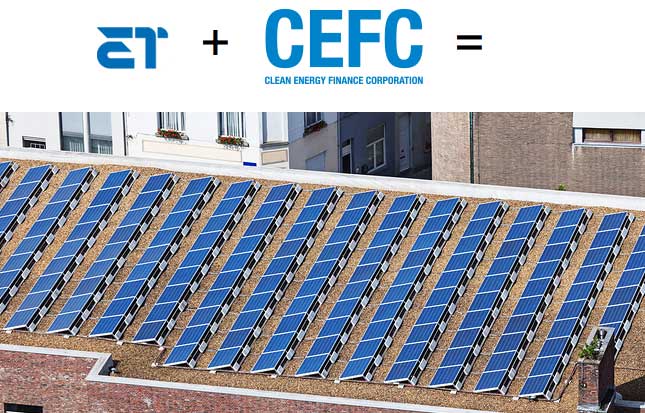What do ET Solar Australia and the Clean Energy Finance Corporation (CEFC) have up their sleeves to promote ET solar panels for large commercial businesses in our country?
There’s more than one way to skin a cat. And more than one model for financing solar energy. This was amply demonstrated last week with the release of the CEFC’s plan to stump up $20 million with the solar energy provider ET Solar in a new innovative partnership that has proved radically successful in overseas countries.
Using a Power Purchase Agreement (PPA) the Corporation will look to ease the way for large businesses such as supermarkets and retailers who (like the rest of us) are looking to reduce skyrocketing electricity bills.
“We see the PPA finance model as a way to remove the barrier of the upfront capital requirement which should enable many more Australian businesses to benefit from solar, reducing energy costs and lowering emissions,” said CEFC CEO Oliver Yates in a CEFC press release.
The model has been highly successful overseas with major retailers such as Apple, IKEA, Toyota and supermarkets such as Aldi, Walmart, Tesco and Sainsbury’s installing large scale solar PV systems. Solar PPAs make sense for retailers and other businesses because their usage patterns very closely match the solar panels’ output. They use a lot of power during daylight hours, so they are going to use almost all the solar energy the panels produce, with very little going back into the grid.
ET Solar Australia has big plans for Australia with solar innovation and the PPA model apparently going hand-in-hand.
Sam Khalil, Head of Operations and Business Development for ET Solar Australia said, “Our first PV systems installed through this program will involve large-scale commercial projects in Queensland, the Northern Territory, South Australia and New South Wales, with a rollout to all states around Australia.”
“We currently have a commercial-scale carport structure solar project underway in Queensland which will incorporate solar energy into a shopping centre carpark, with similar construction planned in other states.”
Speaking of Queensland, the recent Queensland elections (still too close to call at time of writing) have given an indication of the return to the sensible centre on issues such as asset sales and renewable energy. As we discussed in a previous article, the former Newman government has acted as a “spear carrier” for the more extreme anti-renewables approach of the federal government.
Do we then interpret the massive swings against the LNP of almost 12 percent as a vote for common sense on renewable energy? If one accepts that the massive swings show Australians have rejected these harsh anti-renewables measures, does this pave the way for innovative models such as that announced by the CEFC and ET Solar Australia? Will this be the model in the future for the large commercial business sector throughout the nation? Stay tuned.


 RSS - Posts
RSS - Posts



Speak Your Mind